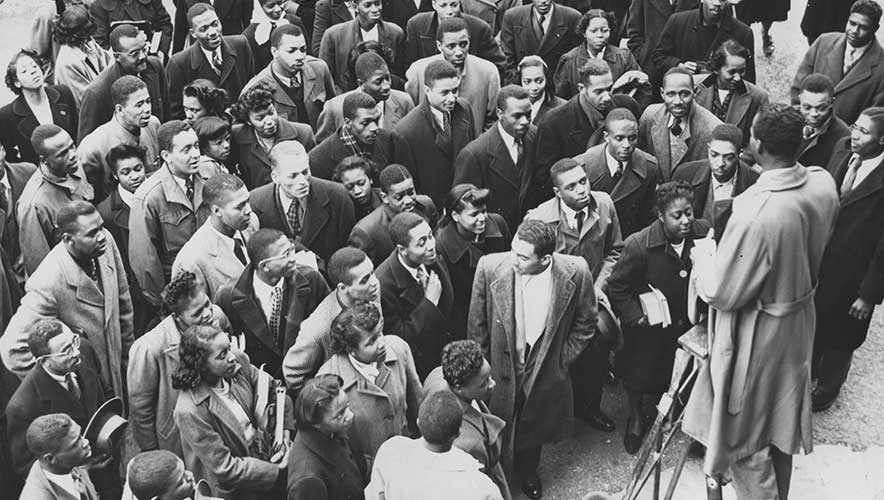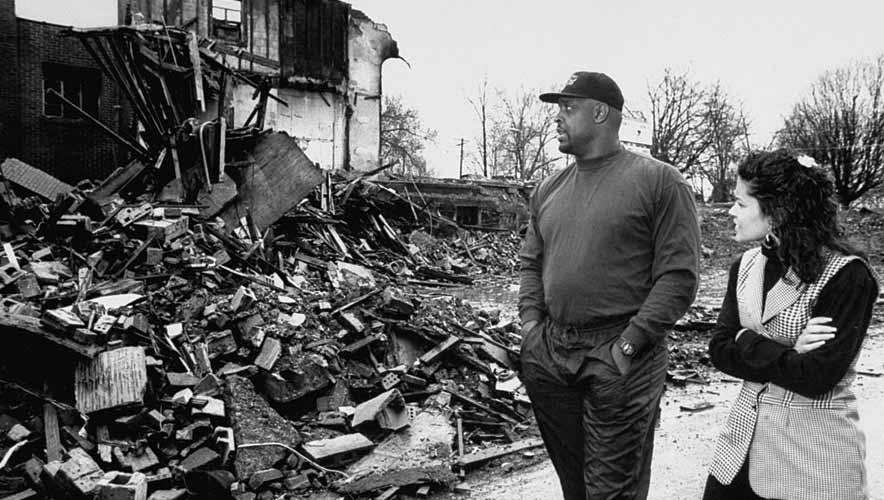Historically Black, Historically Targeted: HBCUs Experience More Bomb Threats, Violent Rhetoric
Excellence is expected at Spelman College. It’s not an attribute for the few, but a characteristic of the entire student body who attends to receive a liberal arts and science education.
Founded in 1881 as the Atlanta Baptist Female Seminary, Spelman became a college in 1924 and now has a student body of approximately 2,100 students from 43 U.S. states and 10 foreign countries.
Lisa Cylar Barrett is the director of policy for the Legal Defense Fund (LDF), a premier legal organization that advocates for racial justice, and attended Spelman as an undergraduate. Her experience there is one that she would not trade for anything, she tells Security Management.
“It’s a wonderful institution. One where excellence is expected and sort of ingrained into us, but also an appreciation and pride about our culture and who we are as a people. And the things that we have accomplished and continued to accomplish,” Cylar Barrett says.
Spelman is one of 101 historically Black colleges and universities (HBCUs) in the United States. These higher education institutions began to be created in the 1800s to provide educational opportunities for Black students who were excluded and unwelcome from attending existing colleges and universities, according to the Thurgood Marshall College Fund.
HBCUs were established to train teachers, ministers, and other professions, eventually growing to “showcase black intellectual thought” and attract students such as W.E.B. Du Bois, Ida B. Wells, Booker T. Washington, Martin Luther King, Jr., and even U.S. Vice President Kamala Harris.
HBCUs “are an important part of the African American experience,” Cylar Barret adds. “It’s an incredible experience to attend an HBCU and have that space of culture and excellence during a really critical period of time for a young person in terms of their development and world outlook.”
After a dip in enrollment between 2014 and 2020, some HBCUs experienced an increase in applications from prospective students in 2022. They also saw a rise in bomb threats made to institutions during the academic year, especially in the lead up to and during Black History Month in February 2022.
Between 4 January and 16 February, 57 HBCUs and houses of worship received bomb threats made via phone call, email, instant message, or anonymous online posts, according to the FBI.
While the uptick in bomb threats against HBCUs in 2022 was notable, it was just part of a larger and longer pattern of violence and intimidation towards Black institutions. Throughout U.S. history, places that are considered gathering points or markers of Black resilience or independence have been attacked.
“Many people understand and know about the 1963 bombing of the 16th Street Baptist Church in Birmingham where four little girls were killed, but perhaps not as many people know about the Tulsa Massacre that occurred decades before in 1921,” Cylar Barrett says.
That assault by white mobs in Tulsa, Oklahoma, was centered on the Greenwood District—an area known as Black Wall Street—and destroyed homes, businesses, schools, churches, a hospital, and a hotel.
“That rampage wasn’t limited to a few buildings, it occurred across roughly 35 square blocks. Many people died. I don’t think we’ve ever gotten an official exact death toll,” Cylar Barrett says. “Thousands of people were left homeless, and the physical community—in terms of the structure of things—was destroyed. But these sense of a center of culture was severely shaken, which is often the objective, going back to this idea of instilling fear and intimidating Black people as they exercise their voice, political power, and to thrive and do well as others who do in this country.”
Another act of violence toward a Black institution and center of cultural power includes the Ku Klux Klan bombing of Reverend Fred Shuttlesworth’s home on Christmas Day in 1956. Shuttlesworth became a target for white supremacists in the 1950s after taking a leadership role in the Civil Rights movement in Birmingham, Alabama.
Other civil rights leaders’ homes were targeted during the 1960s, including the home of former LDF general counsel Julius Chambers.
“It is a sad and long, long history. And it’s not a distant history. We’re talking about bomb threats that were happening earlier this year, but in the 1990s there was a wave of bombings of Black churches in South Carolina,” Cylar Barrett says. “In 2015, we saw a white gunman go into a historical Black church in South Carolina—the Mother Emmanuel Church—and proceed to participate in prayer services before killing nine church members.”
While violence towards Black institutions is not a new trend, the evolution of social media has created the emerging tactic of being able to spread hateful rhetoric and extremist views to a mass audience. For instance, after Elon Musk took over social media company Twitter, hate speech increased across the platform.
“Unfortunately, in this current environment where we’re seeing hate-filled rhetoric flourish and sometimes celebrated by people in positions of power and influence, then it’s not surprising that that leads to attacks on these really critical institutions for the Black community,” Cylar Barrett says. “That is the danger of allowing that type of rhetoric to go unchecked and become a norm because then these types of attacks become predictable.”
Cylar Barrett says the timing of the uptick in threats towards HBCUs also plays a role; these threats were made after a period of racial reckoning in the United States following the murders of George Floyd and Ahmaud Arbery, and the killing of Breonna Taylor.
“That timing cannot be ignored. We put ourselves in jeopardy when we ignore what we’ve seen throughout time, and history teaches us that often we see upswings as a backlash to Black resistance or the exercise of political power or some social movement related to Black people and the experience that they have as a result of the history of racism in this country,” she explains.
In response to this most recent backlash and advance racial justice, the LDF is continuing its work across four major impact areas: criminal justice, economic justice, political participation, and education. This work is important because attacks and threats—like the recent wave of bomb threats against HBCUs—are often in response or made in an effort to dampen or push back on Black people using their voice and political power, Cylar Barrett says.
“The effort to suppress the vote, the effort to preclude an accurate history, the effort to make it more difficult to vote and erect barriers for Black people to obtain mortgages and grow wealth in their families—all of that is connected with this. All of this is interrelated,” she adds.
To address these intricacies, the LDF advocates for policies and resources to be put into place to support institutions that targeted by hateful rhetoric or actions. For instance, the LDF recently participated in the White House United We Stand Summit: Taking Action to Prevent and Address Hate-Motivated Violence and Foster Unity in September 2022.
“There is a through-line of hate from massacres of Indigenous people to the original sin of slavery, the terror of the Klan, to anti-immigration violence against the Irish, Italians, Chinese, Mexicans, and so many others laced throughout our history,” said U.S. President Joe Biden in his remarks at the White House event. “There is a through-line of violence against religious groups: anti-Semitic, anti-Catholic, anti-Mormon, anti-Muslim, anti-Hindu, anti-Sikh…and that through-line of hate never fully goes away. It only hides.”
At the summit, Biden called for acknowledgement of how hate-fueled violence is part of the history of the United States and announced efforts by his administration to prevent it in the future, including school safety enhancements; strengthening federal coordination on preventing, confronting, and recovering from hate-motivated violence; and improving federal government assistance and support for responding to hate-based incidents.
Barrett says the LDF was “happy to see the White House host the summit; it was important to have the administration use its voice, resources, and bully pulpit to speak to raise this issue and elevate this conversation.”
The LDF is also continuing to talk with members of the U.S. Congress and the administration about other ways to address racism and reduce hate-filled rhetoric. Cylar Barrett says that she is encouraged by the greater “awakening and awareness” of society about the experience that Black people have in the United States.
“We have to talk about the history of this country. You can’t address something you’re not talking about,” she adds. “That history is closely tied to race and racism—that is part of the history of this country—and we have to talk about that in order to address it, to hopefully move past the long-history of this happening.”
For more information on bomb threats made against HBCUs and resources to improve security and resilience at these institutions, check out “Amid Bomb Threats, Schools Seek Support and Resources.”
Megan Gates is senior editor at Security Management. Connect with her at [email protected] or on LinkedIn. Follow her on Twitter (@mgngates) or Mastodon (@[email protected]).











